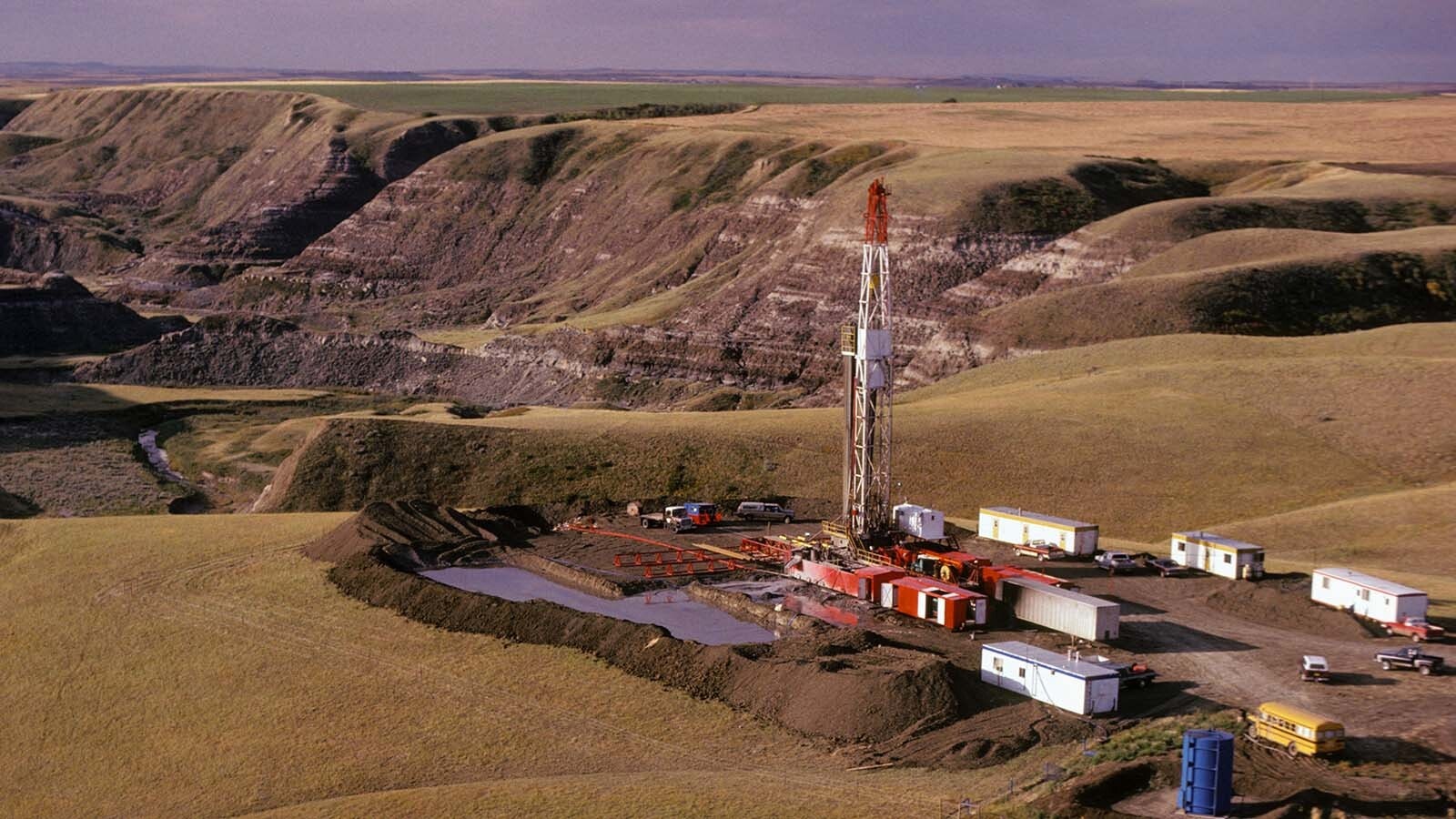Rocky Mountain Power, the Wyoming-based power utility for the Berkshire Hathaway-backed PacifiCorp, plans to work with two climate technology companies to evaluate a potential carbon capture project at one of its older power plants in Wyoming.
The move is a subtle shift from its thinking a few years ago when the utility determined carbon capture and storage was not economical.
Rocky Mountain, which raised electricity rates 8.3% beginning Jan. 1, said it is studying whether to place the carbon capture project at either the Wyodak coal-fired power plant located 5 miles east of Gillette, or the Dave Johnston coal-fired plant 6 miles east of Glenrock.
The 46-year-old Wyodak, which is 80% owned by PacifiCorp and 20% by Black Hills Energy Inc. in Rapid City, South Dakota, generates 332 megawatts of electricity. The 65-year-old Dave Johnston, which may see retirement of the plant’s four units over the next several years, generates 745 megawatts of electricity.
Dave Johnston’s four units were built between 1959 and 1972.
Costs Less Now
In the announcement Friday, PacifiCorp said that it signed a memorandum of understanding with the two companies — Durham, North Carolina-based 8 Rivers Capital LLC and South Korea’s SK Group — that will perform an engineering study to look at each of the existing power plants to determine which could become the best site for a carbon capture project.
The backers and developers of the project would bear the development costs, not Rocky Mountain customers, a utility spokesman said.
Rocky Mountain Power has been evaluating potential carbon capture projects at its Wyoming coal facilities since 2018. Two years ago, an RMP analysis determined that carbon capture wasn’t economical, but that the company would continue to study potential opportunities.
In a shift from this earlier thinking, the company now believes that its working agreement with 8 Rivers and SK Global creates a new pathway for a carbon capture project that would be different than other potential projects it has evaluated.
“The technology is expected to be competitively viable, economical, and any upfront development capital costs of the project will not be shouldered by Rocky Mountain Power customers but will instead be carried by the 8 Rivers development team,” PacifiCorp said in a statement.
“Rocky Mountain Power has been diligently engaged in the process to comply with Wyoming’s desire to implement carbon capture at the company’s coal generating units in Wyoming,” said James Owen, Rocky Mountain Power vice president for environmental, fuels and mining. “The partnership and collaboration announced today is a major step forward in determining if carbon capture technologies can bring benefits to our customers in Wyoming at a reasonable cost.”

Other Projects
There are other carbon capture and storage projects in Wyoming.
A strategic partnership between an energy research organization associated with the University of Wyoming and a California filtration business received $4.6 million Thursday from the DOE to continue cutting-edge work on capturing and storing carbon dioxide at one of the nation’s youngest coal-fired power plants.
Newark, California-based Membrane Technology and Research Inc. (MTR), and UW’s School of Energy Resources (SER) are working on a pilot project to test out their work at the nearly 500-megawatt Dry Fork Station plant owned by Basin Electric Power Cooperative in North Dakota.
Construction began last year on MTR’s large pilot plant at the Wyoming Integrated Test Center (ITC), located adjacent to the Dry Fork Station plant near Gillette that became operational 13 years ago.
Other projects in Wyoming are looking to capture carbon dioxide out of the air, including one proposed by Spiritus Technologies in central Wyoming and a pair of companies that want to develop their Project Bison machines in southwestern Wyoming.
Good News For Coal Plants, Too
Gov. Mark Gordon, who has been a proponent of carbon capture projects in Wyoming, said that PacifiCorp’s announcement gives an extended life to the state's coal-fired power plants.
“This decision to take this action comes as a result of the Wyoming Legislature and me working closely together in both policy and legislation in support of keeping our coal as a base fuel for dependable, dispatchable energy,” he said in a statement.
He cited recently enacted legislation that contributed to PacifiCorp’s announcement.
Earlier this month, the Wyoming Legislature approved significant changes to regulations that allow utilities to delay the installation of coal-fired power plant carbon-capture retrofits until 2033, three years beyond a previous deadline imposed by state law four years ago.
House amendments contained in the bill required public utilities to generate at least 20% of the electricity from their coal-fired plants in the state using carbon capture and storage technology, if financially feasible. The legislation allows utilities to recoup the cost of retrofits from customers.
“There is still much to be done, and I remain committed to and confident in finding ways to reconfirm that our coal industry remains vital to our nation’s energy supply while extending Wyoming’s competitive edge in carbon capture and the technologies that will move our country forward,” Gordon said.
Pat Maio can be reached at pat@cowboystatedaily.com.





